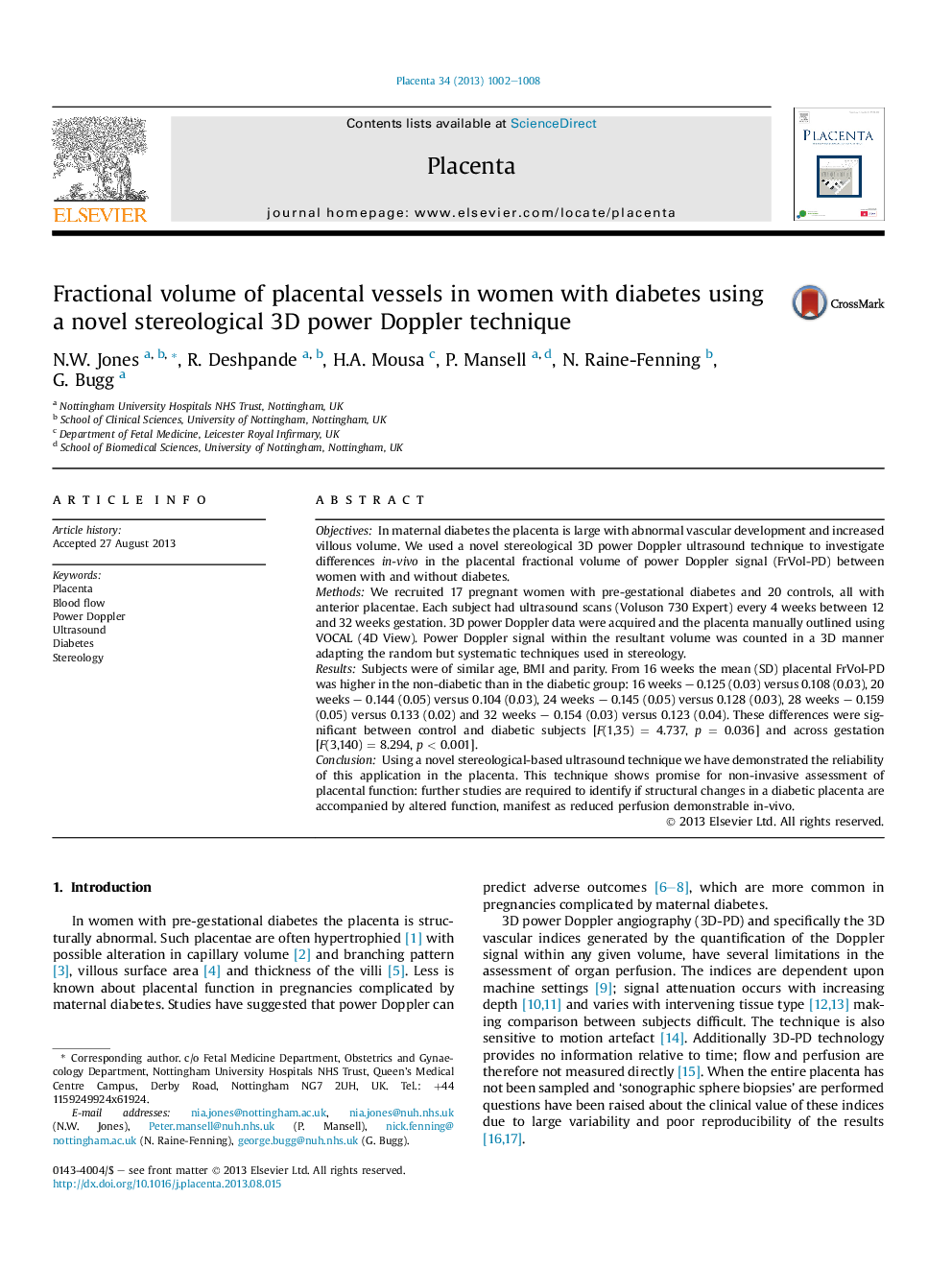| Article ID | Journal | Published Year | Pages | File Type |
|---|---|---|---|---|
| 5895776 | Placenta | 2013 | 7 Pages |
ObjectivesIn maternal diabetes the placenta is large with abnormal vascular development and increased villous volume. We used a novel stereological 3D power Doppler ultrasound technique to investigate differences in-vivo in the placental fractional volume of power Doppler signal (FrVol-PD) between women with and without diabetes.MethodsWe recruited 17 pregnant women with pre-gestational diabetes and 20 controls, all with anterior placentae. Each subject had ultrasound scans (Voluson 730 Expert) every 4 weeks between 12 and 32 weeks gestation. 3D power Doppler data were acquired and the placenta manually outlined using VOCAL (4D View). Power Doppler signal within the resultant volume was counted in a 3D manner adapting the random but systematic techniques used in stereology.ResultsSubjects were of similar age, BMI and parity. From 16 weeks the mean (SD) placental FrVol-PD was higher in the non-diabetic than in the diabetic group: 16 weeks - 0.125 (0.03) versus 0.108 (0.03), 20 weeks - 0.144 (0.05) versus 0.104 (0.03), 24 weeks - 0.145 (0.05) versus 0.128 (0.03), 28 weeks - 0.159 (0.05) versus 0.133 (0.02) and 32 weeks - 0.154 (0.03) versus 0.123 (0.04). These differences were significant between control and diabetic subjects [F(1,35) = 4.737, p = 0.036] and across gestation [F(3,140) = 8.294, p < 0.001].ConclusionUsing a novel stereological-based ultrasound technique we have demonstrated the reliability of this application in the placenta. This technique shows promise for non-invasive assessment of placental function: further studies are required to identify if structural changes in a diabetic placenta are accompanied by altered function, manifest as reduced perfusion demonstrable in-vivo.
